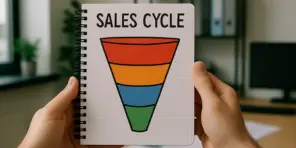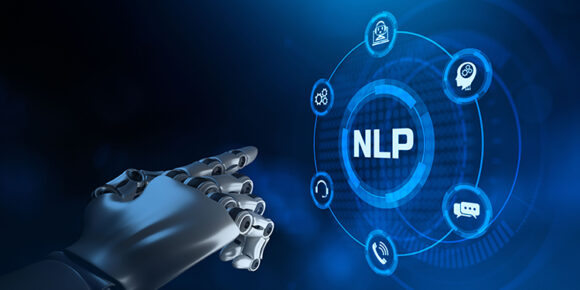
Data Cleansing vs. Data Enrichment: Know the Difference!
Author: Aaron Smith
You must have noticed that at times a carefully-crafted campaign that tested well with a sample audience fails to attract a larger set of the target market, whereas certain strategies and offers unexpectedly shoot sales through the roof! The reason behind well-intended but failed marketing strategies has to do with the quality of data you relied upon to connect with your customers. If your data is not accurate or timely-updated, it can adversely affect your marketing strategies. You may miss out on diverging behavioral patterns and shifts in needs and demands just because you work with low-quality data. This is why data cleaning and data enrichment are extremely critical.
Importance of Customer Data
Reliable data allows a company to dig deep into its customers’ perceptions about their brand to truly understand its market value. It also allows marketers to make informed marketing decisions, employ targeted marketing techniques, and offer customers products and services that they genuinely need. Data also delivers insights on customer demographics, psychographics, behavior and lifestyle preferences. Additionally, by employing data science, businesses can study their customers’ buying habits; what and when they click and what kind of offers or loyalty programs they engage with the most. With all this, data marketers can easily engage customers better and set them on the path to purchase.
With the constant onslaught of data barging in from all directions, things tend to get messy unless you employ real-time data cleansing and data enrichment techniques using automation. It is not fruitful for a business to know that a subset of proactive customers was in the market two weeks ago, especially if they all made purchases. Because, now this particular subset won’t be in the market to buy the same products for quite some time. Cleansed and enriched data takes care of such issues and provides businesses with fresh information that is accurate and up-to-date.
What Is Data Cleansing?
Also called data cleaning, this process ensures that data used by a business is trustworthy, accurate, and consistent. Simply put, it is the process of sifting through a mountain of data and fish out high-quality usable data about your customers’ behaviors, motivations, etc. Data cleaning involves resolving discrepancies, culling repetition, updating old records and discarding incorrect data.
For example, you initiate a data cleaning project by discarding old data with missing fields and weeding out fake profiles under pseudonyms like Mr. Mickey Mouse. Post this process, you can buy data from a third-party enterprise and combine it with your cleaned data to make it denser. Data cleansing allows you to identify and erase corrupt, inaccurate and outdated data from your customer database platform. This is usually done by analysts who employ AI-powered algorithms.
Data Cleansing: Methods to Employ
Even though this process is automated, as a marketer, it may be of benefit to you to gain an understanding of the best practices that should be employed to clean data.

Merging Duplicates
The identification of duplicate records should be merged into singular customer profiles to avoid repetition. This is an extremely important step during data cleansing and is done using CDPs. Customer Development Platform or CDP is a software that aggregates and collates customer data across several customer categories and touchpoints. CDPs use Machine Learning to consolidate millions of quality customer records.
Cleaning up Metatags
Metatags’ best practices tend to evolve. Given that your website’s landing page might have been online for a while, the metatags for your blog posts may become obsolete. Optimizing them for SEO using fresh keywords will be needed from time to time and this is an important part of the data cleansing ritual.
Purging Old Leads
Data purging is a technical term used for permanently deleting redundant data from storage. There are many different strategies and best practices that one can employ to purge data. Generating new leads takes hard work, but these leads tend to decay over time and need to be removed so that they do not hamper your brand’s overall engagement. No point marketing aggressively to old leads that are on the brink of purging. Data cleaning is successful when old leads are segregated and purged of fresh ones.
What Is Data Enrichment?
Once you have cleaned old data, made it fresh and merged it with new data, you can begin to fortify it further by using CDP software and making it even more reliable. A lot of cleansed data tends to be raw as newly acquired third-party data is merged into it. Therefore, data enrichment is a process employed to make data richer by further refining merged raw data.
For example, a common data enrichment program can be run to correct typos in a gargantuan customer database through the use of precision algorithms. This is one type of data enrichment activity.
The Different Methods of Data Enrichment
Enriched data allows you to cater to your customer’s preferences accurately. Data enrichment’s best practices involve the use of AI and Machine Learning extensively. Let us look at some of the methods through which data can be enriched –
Single Platform Consolidation
A robust CDP is used to combine sources and refine data to generate fresh insights. A customer’s purchase journey has several touchpoints, which, if mapped correctly, can be advantageous. Each touchpoint, however, cannot paint a complete buyer picture. Therefore, by combining various data sources, one can gain a 360° access to all touchpoints. This allows businesses to develop a deeper understanding of each step of their customers’ journey.
Offline Data Addition
Customer journeys are expressed today through omnichannel – meaning they take place on several, diverse portals and mediums. In addition to scouring web-based metrics, businesses also need to shift focus towards offline data sources such as the nature of in-store purchases for complete data enrichment.
Third-party data
This data is collected by an entity that does not have a relation with your business directly. These organizations are experts at creating potential customer databases that can be used across several business verticals. This data is generally purchased and can be combined with other data sources and can paint a more complete picture of your target client’s buying journey. Usually, third-party data is accurately combined with first and second-party data with the help of technology that automatically finds correlations between these datasets, and creates millions of actionable consumer profiles for segmenting as well as targeting.
In a nutshell, data cleansing is identifying whether your data is still valid and correct whereas data enrichment, also called data appending, involves the process of fortifying and adding more information to the pre-existing database to give it more meaning which can make it even more useful. Tidying up your data is the first step towards building a better marketing strategy. As a marketer, emphasize harder on the quality of data rather than its quantity.




